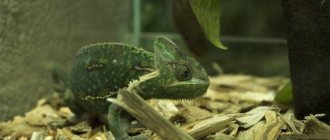Hedgehogs are increasingly used as pets. These cute and funny animals come from the wild, and therefore their content has its own nuances. For example, some species hibernate due to low indoor temperatures and may not wake up.
Let's find out how to care for a hedgehog so that it pleases your household for a long time.
Home content
Hedgehogs are active and mobile animals, and forest animals are also excellent steeplejacks.
This means that to keep a pet you will need a spacious cage or mini-aviary measuring at least 90x60 cm. The height of the cage for dwarf African hedgehogs is not particularly important, but still it should not be less than 40 cm. Cages can be purchased at any pet store . An alternative option is to make an enclosure yourself from wood or plastic. Smooth walls will not allow animals to escape from the house.
If you decide to buy a metal cage, then the gap between the bars should be minimal so that the little hedgehog cannot get out into the wild.
The second condition for staying in the house is the presence of good ventilation in the cage. Fresh air and the absence of drafts have an excellent effect on the health of your pet.
How they eat
When asked what hedgehogs eat, many people make mistakes. They think that individuals like apples, mushrooms, cherries and similar foods. Hedgehogs are predators, so they have little interest in plant foods. The hedgehog feeds on insects that it can find on the ground. They are the ones who make up the diet of cute animals.
What do hedgehogs eat in the wild:
- By bugs.
- Worms.
- Snails.
- Various larvae.
The hedgehog eats what it can independently find in fallen leaves. They catch frogs, lizards and even small snakes. Most often, individuals hunt their prey in the fall, because hibernation is approaching.
An interesting fact is that the forest animal eats the same thing as the sea urchin. These species are considered omnivores, although they live in different environments.
The hedgehog even eats plant foods, although he does not like it. Individuals consume apples, acorns and berries when there is nothing else. Mushrooms are also included in the diet of individuals, and animals also eat food waste that can be found in dachas. If you manage to find insects, then the individuals will not feed on plant products.
The life cycle of hedgehogs is in many ways similar to bears, because it is also divided into two phases - passive and active. Individuals sleep in winter and are active during other periods. In winter, the animals' metabolism slows down, so they can easily survive for three months. All this time, hedgehogs do not eat anything, but use fat deposits to fuel the body.
What to feed at home
Hedgehogs can be kept at home, and they can be fed the same things that people eat. Not all food will be beneficial for individuals, so it is recommended to abstain from some foods. Experts recommend purchasing special mixtures that can be found in pet stores. If you cannot find a similar product, then you can temporarily give food that is produced for small kittens.
If there is an unusual animal living at home, then you need to figure out what hedgehogs eat. They will need to be fed in a timely manner, choosing the right diet to avoid health problems.
What foods do hedgehogs eat:
- Internal organs of a chicken.
- Boiled poultry meat. Chicken and turkey will do.
- Cucumber, carrot, pumpkin. You can give sweet peppers raw, but only in small portions.
- It is useful for individuals to give apples, raspberries, and pears. Again, do not overfeed these foods.
- Raw quail eggs, as well as chicken eggs. Hedgehogs normally eat them about once a week.
- Live insects. They can be purchased in specialized stores or found on the street.
From this it becomes clear what hedgehogs eat at home. It is recommended to serve all products warm; room temperature is ideal.
It is important to ensure that they are fresh. Leftovers should always be removed to prevent your hedgehog from eating spoiled food.
There are also foods that hedgehogs eat, but it is better to avoid them:
- Citruses and any exotic fruits.
- Garlic and onion. They should never be given, otherwise the condition of the hedgehog’s body will worsen.
- Grape. The animal will not be able to spit out the bones, which is why it runs the risk of choking on them.
- Dried fruits. They are poorly absorbed by the digestive system.
- Fast food. Even people should refuse it.
- Nuts and seeds. Eating them may upset your digestion.
- Milk. Adult hedgehogs do not need it, but babies use it. From about 6 weeks, the cubs will switch to solid food and will have to give up milk.
It is important to remember that hedgehogs feed primarily on insects. For this reason, the diet should consist of protein products, since without them the body will not be able to fully function.
It is necessary to ensure that there is constant access to water. You should also remember that hedgehogs are wild creatures that have their own habits. It is not always possible to get along with them, so you should think carefully before getting such a pet.
Hedgehogs are true predators, so they prefer to eat protein foods. In the wild, they search for insects, as well as lizards and frogs. They can eat any food at home, but they should not be given dangerous foods that can worsen digestion.
The owner must take a responsible approach to nutrition, since the animal’s well-being depends on it. It is recommended to create a menu in consultation with your veterinarian and then stick to it. The main thing is to ensure that the food is always fresh, and then the digestive system will work perfectly.
Feeding the hedgehog
In their natural environment, hedgehogs eat primarily animal foods. Their diet is dominated by insects - beetles, spiders, caterpillars, slugs, earthworms. These animals are not averse to feasting on bird eggs, frogs and lizards.
Hedgehogs living at home can be fed not only with purchased insects, but also with meat, fish, eggs and offal. All this is given in boiled form. The preferred meats are chicken fillet, turkey, veal and horse meat - low-fat varieties.
It is important for your pet to get fiber. Its main sources are vegetables:
- carrot;
- spinach;
- Bell pepper;
- pumpkin;
- cucumbers
As for fruits, the home hedgehog likes apples, pears, strawberries, wild strawberries and bananas. It is better not to feed dried fruits to your pet, as they contain a lot of sugar.
Attention! Uneaten pieces of food are thrown away daily. Stale food is a favorable environment for the proliferation of pathogenic bacteria.
Advantages and disadvantages of the pygmy hedgehog as a pet
Reviews about pet hedgehogs are very contradictory. In the West, hedgehogs are more popular than in Russia, and at the same time, there are often cases when domestic hedgehogs are thrown into the street. The main reason for getting rid of animals in such a cruel way is that people overestimated their capabilities and could not cope with the care or accept the behavior of the hedgehog. Therefore, before getting such an exotic pet, you need to think very carefully.
Advantages of decorative hedgehogs:
- charming fairytale appearance. It is interesting to watch them, to study their character and habits;
- Caring for a hedgehog is easier than caring for a cat or dog, you don’t need to comb them and constantly collect hair from furniture and floors, there is no need for training. It is easier to keep a hedgehog in an apartment, because it does not require walking outside.
- Hedgehogs are omnivores in nature, so they are generally not difficult to feed. In addition to the main diet, domestic hedgehogs can be given treats from our table: vegetables, fruits, bread.
- The African pygmy hedgehog is an ideal pet for people who are allergic to animal fur.
- A hedgehog is a rather intelligent creature; it is quite trainable and over time can respond to its name and adapt to interaction with its owners.
- These pets are well suited for people who spend whole days at work, because, unlike cats or dogs, during the day he will not be bored alone, but will simply sleep. They will become excellent companions for “owls”, because they also lead a nocturnal lifestyle.
- the hedgehog does not need to acquire a partner or comrade, and if breeding is not planned, one specimen is enough.
Disadvantages of keeping an indoor hedgehog
A hedgehog needs space to move, but by walking freely around the house, it can cause damage to the apartment, get hurt, or even get lost. To avoid these problems, it is necessary for a hedgehog to have a spacious cage or enclosure, which will take up a lot of space in the apartment.
Hedgehogs lead an active lifestyle at night, so if it is not possible to place a hedgehog away from the bedroom, or the apartment has poor sound insulation, then it is better not to have a hedgehog.
Like all pets, the African pygmy hedgehog must be vaccinated. Therefore, the animal will have to be taken to the veterinarian at least twice a year.
Many parasites can live between the hedgehog's needles: fleas, ticks, etc. However, it is very difficult to remove them, since the hedgehog does not tolerate treatment well. Hedgehogs can also be carriers of various dangerous infectious diseases, including rabies and plague.
These pets are not suitable for families with small children, because they can easily injure the child with their thorns or even bite them when trying to play with the animal. Noise and sudden movements can cause aggression in the animal.
It is necessary to keep in mind that hedgehogs shed twice a year, and at this time the pet requires special care. Each time it molts, the African pygmy hedgehog sheds up to 20% of its needles.
Maintenance and care
Keeping a hedgehog at home will require the owner to create suitable living conditions for him and provide proper care for the pet.
The first step is to provide the new resident with his personal house, in which the hedgehog will spend almost all of his time. You should not let your hedgehog wander around the apartment, even if he has lived in the house for a long time. Moreover, you cannot “walk” him on the street. The domestic pygmy hedgehog, for example, is completely unadapted to the wild. An active, nimble and small animal is capable of eluding its owners and getting lost indoors. This can lead to big problems:
- A hedgehog can get into a place where it will be difficult for him to get out, and it is difficult for his owners to find him.
- Get entangled among many wires or gnaw them, causing harm to yourself, including.
- Find and eat small objects, which can be dangerous to his health.
- If the hedgehog hid behind the furniture, and the owner did not notice it and decided to move the chair, for example, there is a high chance of injuring the pet or even crushing it.
- In the autumn-winter period, non-hibernating African pygmy hedgehogs, feeling the heat of a radiator, can get burned on it.
- Its sharp teeth, claws and thorns can ruin many things in the house.
- A hedgehog is not a cat; if he wants to go to the toilet, he will do his business where he is now.
It is best to keep a hedgehog at home in a spacious cage, at least half a meter in length, so that the animal can run around freely. The height should be sufficient to prevent the pet from getting out of its home. Hedgehogs are good climbers, so you should choose a cage about 90 cm in height. The cage can be metal or wood. Preferably with a solid floor so that the hedgehog’s paws do not get stuck in the mesh or grate. It would be good if the cage had a retractable tray - this would make daily cleaning easier. You should not choose aquariums or terrariums as a home. Although they are quite large, the climate created inside them due to the glass walls is not suitable for hedgehogs. For the hedgehog's comfort, the floor can be covered with straw, hay, special granules for rodents, and sawdust. You should not choose sawdust from resinous tree species, they are harmful to the health of hedgehogs. It is imperative to equip a place for a toilet, place a food bowl (made of porcelain, glass) and a pneumatic drinking bowl. To give your hedgehog something to do, a running wheel is installed in the cages, and you can purchase several safe toys.
It is necessary to constantly monitor the cleanliness of the cage. Thorough cleaning should be carried out at least once a week: change the filler, wipe the cage, wheel, wash the bowl, etc. Cleaning products should be used that are safe and without strong odors.
Well suited: baby soap, chlorhexidine solution, special disinfectants that can be bought at a pet store, soda solution. After using them, be sure to rinse the cage well with plenty of water.
Domestic hedgehog: how to choose a breed?
A pet hedgehog can be chosen from the following breeds:
African hedgehogs - white-bellied, Algerian, South African, Somali subspecies. The cleanest and most heat-loving hedgehogs. Extremely capricious in terms of requirements for temperature and air humidity. The temperature range from 22 to 25 degrees is ideal for them.
- Steppe - Chinese, Daurian. They also prefer high air temperatures. But in terms of requirements for its humidity level, they are less whimsical. They are the hardest to get. But the effort is worth it, since Chinese hedgehogs lead a diurnal lifestyle, and Daurian hedgehogs easily change their habits.
- Eurasian – Eastern European, European, Amur hedgehogs. They are best able to adapt to the peculiarities of the Russian climate. The ease of keeping will also manifest itself in the fact that such hedgehogs are easy to feed - they are practically omnivorous. It is recommended to start mastering maintenance with these breeds.
This is what a domestic European hedgehog might look like
. Eared hedgehogs - Indian, bare-bellied, dark-spined, collared, Ethiopian, long-eared hedgehogs. Extremely popular as pets. They are distinguished by their miniature size and good immunity.
What type of hedgehog is suitable for keeping at home?
Many people have probably at least once had the desire to pick up a forest hedgehog, bring it into their apartment, and keep the animal as a pet. But even a temporary stay of a forest guest creates many problems: night activity, reluctance to communicate, dietary habits. Attempts to pick up the animal can result in serious bites.
It is unlikely that an adult animal raised in freedom will be able to adapt to captivity. In addition, wild hedgehogs can carry dangerous infections (rabies, leptospirosis, helminthiasis, etc.), so the real risk of infection with viruses and bacteria stops many from taking a rash step.
It’s a completely different matter to buy an animal from a trusted nursery or specialized pet store. Healthy hedgehogs from domesticated parents, with good heredity, are oriented towards communication with humans from birth.
For normal interaction with a person, a hedgehog needs regular communication with him.
A generation of hedgehogs born in captivity is not at all afraid of people. The buyer’s task is to choose the appropriate variety of hedgehog for his soul and way of life. If you pick up an ordinary wild hedgehog that is in trouble, you should definitely show the animal to a veterinarian.
In the process of care, feeding, and treatment, you should strictly follow the recommendations of a specialist and exercise caution when communicating with a small predator. A forest hedgehog at home should not be a toy in the hands of a child; the animal’s bites are painful and have dangerous consequences. Breeders offer hedgehog breeds for home keeping:
- eared - very popular due to their miniature size. Strong immunity distinguishes all varieties: Indian, collared, Ethiopian, dark-spined, bare-bellied;
- Eurasian - widespread due to successful adaptation to Russian climatic conditions. Subspecies of Eastern European, European, and Amur hedgehogs are selected. They are best suited for inexperienced owners of prickly pets, since the animals are omnivorous and unpretentious in keeping;
- steppe animals are rare to purchase, since high demand is associated with the peculiarity of animals to lead a diurnal lifestyle and easily adapt. It should be taken into account that the Daurian and Chinese species are heat-loving hedgehogs that prefer low levels of air humidity;
- African - the most popular for keeping pets due to the special artificial breeding of the domestic breed. The animals are miniature, the animal easily fits in the palm of your hand.
The African hedgehog is a very clean and heat-loving animal, not adapted to the conditions of the wild. The prickly animal is only 16-20 cm in length, weighing no more than 500 g. The needles of the dwarf hedgehog, unlike related breeds, are not so sharp and hard.
The pet does not hibernate, runs less at night, and does not make as much noise as its relatives. All subspecies - Somali, Algerian, white-bellied, South African - are very sensitive to the indoor microclimate. It is important to maintain a temperature of 22-25°C for their comfortable living. Cold temperatures below 15°C are critical for delicate hedgehogs - the animals hibernate and may not wake up.
The African hedgehog has a very friendly and sociable character.
The domestic dwarf hedgehog was bred in different color options:
- “salt and pepper” - black mask, nose, eyes, most of the needles. There are dark spots on the light abdomen;
- gray - a combination of light and dark shades of gray, black eyes, nose, spots on the legs and abdomen;
- brown - a combination of shades of the skin, needles from gray-pink to chocolate. Black eyes with blue edging;
- “champagne” is a light beige color of uniform color. The mask is not expressed. Ruby eyes. Nose pink;
- “tsinakot” - light brown needles alternate with pale beige. The pink nose is covered with brown specks. The skin on the back and ears is also pink;
- “cinnamon” is a uniform light brown color, with a pinkish nose. Eyes black or ruby.
There are albino animals with a white, needle-like coat, scarlet eyes, and pinkish skin. Pygmy hedgehogs are very affectionate and tame. Some owners teach their pets to respond to their name and follow simple commands. Attachment to a person is very high.
How to maintain: living conditions
The basis for its comfortable living is a cage of sufficient size. The minimum space that an animal requires is 70x45 cm, but it is better to purchase a cage with bottom dimensions of 90x60 cm and a height of at least 40 cm. It can be made of wood or plastic; metal cages for rodents are also suitable.
Hedgehogs are excellent climbers and can escape when the top lid is open; a plastic container with slippery walls is good in this regard.
An important maintenance condition is a solid floor surface, otherwise the hedgehog can damage and break its paws.
You should not choose a cage with large holes between the bars, because the animal will easily slip through and run away, or even worse, get stuck between them.
What should be in the cage?
For a comfortable stay, a hedgehog needs:
- A running wheel measuring 25 cm or more in diameter. Hedgehogs have a tendency to obesity and they simply need this kind of physical activity. Make sure that your pet's spine does not bend while running. The wheel must have a solid surface without rods so that the animal does not injure its legs.
- A stable bowl with rounded edges, otherwise the pet will spill the food.
- The drinking bowl can be ceramic or nipple-type. The latter option is better, as hedgehogs pour sawdust into the water.
- A house, it will serve as a place to sleep, a reliable shelter from light and loud sounds. You can use a special fleece bag or a soft travel bag as a house.
- A litter tray with low sides so that your hedgehog can easily climb into it.
- Toys - balls for cats, plastic balls, cardboard toilet paper rolls. Hedgehogs will also love a cardboard box or plastic container with fleece scraps. The pet will be happy to rummage and rest in them.
Sawdust, paper granules, and non-clumping cat litter are used as filler. Do not put sawdust from coniferous trees in the cage. When they come into contact with urine, they release fumes that are dangerous to hedgehogs. Do not buy scented litter: the foreign smell will repel the hedgehog.
Spread straw on the floor and moss on top of the filler. An alternative to straw is a piece of soft fabric - corduroy, fleece. It is cut to the size of the cage and placed on the bottom.
Domestic hedgehog: nuances of hygiene
A domestic hedgehog requires care on a par with cats and dogs. In particular, you should constantly wash his bowls . hot water for this You also need to treat the running wheel with water and clean the bedding. It is recommended to change the litter approximately once a week.
bathed , but only when they become dirty. Warm water is suitable for this but even this should not get into the ears or eyes. Therefore, you need to fill the container approximately to the level of the hedgehog’s tummy.
IMPORTANT: As a detergent, according to numerous reviews, foam is ideal for bathing puppies. For example, based on oats.
It is convenient to clean with a toothbrush . It will perfectly treat the areas between the needles. It is also convenient for cleaning paws.
After bathing, the hedgehog must dry himself with a towel. You should not use a hairdryer - the animal may get scared.
It is also recommended to trim your hedgehog's claws. Otherwise, they will wrap up and the animal will be injured, for example, during a wheel race. But you only need to remove the very ends. Nail scissors are best suited for this purpose
Domestic hedgehog loves to swim
Kinds
There are several types of hedgehogs that can be kept in apartment conditions. Let's get to know them better.
African
Hedgehogs of this species are divided into the following varieties:
- Algerian;
- white-bellied;
- Somali;
- South African.
These decorative pygmy hedgehogs are not found in the wild - they were bred artificially. Outwardly, they have much in common with ordinary hedgehogs, but are more modest in size. When this little animal is in a good mood and absolutely calm, its needles cease to be sharp - they become soft and non-prickly.
One of the differences between an African hedgehog and a forest hedgehog is that it almost never stomps when it moves around the house. This animal can easily be trained to stay awake during the day and not at night. You can distinguish an African from a simple forest dweller just by looking at him - these hedgehogs are much smaller.
Steppe
Steppe hedgehogs are big fans of high temperatures. But these animals do not like high levels of humidity. They are divided into the following breeds:
- Daurian;
- Chinese.
Eurasian
Animals of this species are divided into the following breeds:
- Amur;
- Eastern European;
- European.
Eurasian hedgehogs are well prepared for the Russian climate.
Lifespan
The question of how long domestic hedgehogs live is very important. Although nature has given these little ones 10 years of life, the little ones in captivity are not destined to live to that age.
Hedgehogs usually die at the age of 5 years with good care and feeding. There are also animals that are long-lived and go beyond the eight-year mark, but this is the exception rather than the rule.
Domestic hedgehog hibernates: tips, recommendations
Not every pet hedgehog will hibernate, but most do. A similar phenomenon occurs in nature in the fall after the animal has gained sufficient fat reserves. Estimated start time is from late October to early November.
Before this, the hedgehog should be fed with special effort. There is no need to come up with a special diet - everything is the same as usual, but in larger quantities.
A caring owner needs to take care of arranging a nest for a pet in advance. Suitable materials include leaves, sawdust, hay - anything that is used by hedgehogs in nature. Cloths will also work.
You can recognize the approach of hibernation by the hedgehog’s state of apathy. He is drowsy and often falls into a daze. Once the hedgehog falls asleep completely, there is no need to worry about him until spring.
The domestic hedgehog, like its wild counterpart, needs a nest during hibernation
Many people associate a hedgehog with a good-natured creature from fairy tales, transporting apples and mushrooms. In fact, we should not forget that this creature is a predator that requires respect. Only with such an attitude will it be possible to coexist harmoniously with a cute living cactus.
How to choose a healthy pet hedgehog: recommendations, tips
A healthy pet hedgehog is largely the result of human observation:
- The first thing you should pay attention to is the harmony of the overall appearance. A healthy animal eats enthusiastically, so there should be no sagging skin. However, the hedgehog should not resemble a ball either.
- The eyes should be bright and round. A comparison with shiny black buttons is appropriate.
IMPORTANT: Discharge and crusts indicate health problems.
Your pet hedgehog should look at you with sparkling eyes without sour eyes.
- The nose is ideally also clean and dry. Discharge and crusts are a clear sign of illness.
- Specks, wounds, bumps - all this should be absent . Of course, the hedgehog is covered in spines. However, when the animal moves, they do not lie close to each other, so skin imperfections are always visible.
- Speaking of walking. There is such a disease as “wobbly hedgehog syndrome.” According to statistics, the African dwarf variety is especially susceptible to it. From the name everything is clear - the animal staggers, shudders, and limps. As a rule, it has a whole bunch of concomitant diseases.
- belly should be evenly covered with fur. Mats, like bald spots, are excluded in a healthy individual.
A healthy pet hedgehog should have a belly evenly covered with fur.
Choosing a breed
If you want a little prickly friend to live in your city apartment, you can buy a hedgehog. You should ask the seller to see a veterinary report, as there are cases of rabies among hedgehogs. For this reason, it is better not to take a wild forest dweller; moreover, they are often infected with helminth eggs and can be carriers of leptospirosis.
Leptospirosis is an acute infectious disease caused by bacteria of the genus Leptospira. The disease is characterized by damage to the capillaries, often damage to the liver, kidneys, muscles, symptoms of intoxication, and is accompanied by undulating fever.
If you are wondering what breed of hedgehog to buy, Wikipedia will help you figure it out. To make your task easier, we present the classification of these animals here.
Pictured is an African Pygmy Hedgehog
- Algerian;
- Somali;
- South African;
- White-bellied.
- Eastern European;
- Amursky;
- European or Ordinary.
- Indian;
- Collared;
- Dark needle;
- Apodal;
- Ethiopian;
- Eared hedgehog.
They are divided into:
- Algerian.
- White-bellied.
- Somali.
- South African.
Algerian
Daursky
This species prefers high temperatures, but not too high air humidity.
Eurasian
- Amursky.
- Eastern European.
- European.
Amursky
This genus is adapted to Russian conditions.
The best option for an apartment is the African pygmy hedgehog, because it is specially bred for keeping at home.
This species has good immunity and small dimensions.
Varieties of domestic hedgehogs
There are many types of hedgehogs on the planet. They all differ: in habitat, size, weight, length of spines, how much spines cover their body, and slight differences in appearance. Domestic hedgehogs can be divided into only two varieties: domesticated wild ones and artificially bred ones for keeping in people's homes.
Among the former, two species are especially common as pets:
- Common (European) hedgehog - this type of hedgehog is common in Europe and Asia. They grow on average from 20 to 30 cm and weigh 700-800 grams. Not only their spines are sharp, but also their teeth. It has an elongated muzzle, small ears and a constantly wet nose.
- The long-eared hedgehog lives in the deserts and dry steppes of the Middle Eastern countries, Central and East Asia, and in some steppe regions of Russia. They are distinguished from “ordinary” hedgehogs by the presence of elongated ears, which can reach up to 5 cm, a small body measuring from 15 to 27 cm, and weighing from 200 to 500 g.
How do hedgehogs sleep?
The animals sleep during the day. The animals are nocturnal, and during the day they like to sleep in their house. However, he can be taught to change his daily routine, for example, feeding him during the daytime. Over time, the animal will get used to it and stop rustling at night.
African pygmy hedgehogs do not hibernate, but it is vital for other animals. If a hedgehog stays awake all winter, then in the spring it dies. Before winter sleep, the animal accumulates fat and becomes lethargic.
During sleep, the hedgehog curls up into a ball, pressing its paws and nose to its muzzle. It is recommended to take it to a cool place and cover the cage with straw on top.
Before hibernation, the hedgehog should be well fed, because during the winter, during sleep, it loses up to 50% of its weight. Pets sleep for 1.5-2 months, and if the cage is kept on the balcony, the hedgehog can sleep all winter.
The hedgehog seems to be an unpretentious animal only at first glance; in fact, it requires a responsible attitude. If you decide to get a funny pet, buy it at a pet store. Bringing home wild hedgehogs is not recommended.
Pros and cons of keeping hedgehogs
Before getting a hedgehog as a pet, you should weigh the pros and cons.
| pros | Minuses |
| The animal does not need much space | The hedgehog is active not during the day, but at night; the owners may be disturbed by noise |
| A funny pet is interesting to watch | It is impossible to toilet train an animal |
| Hedgehogs are undemanding when it comes to nutrition and eat a variety of foods. | Taming takes a long time, a hedgehog can bite if someone encroaches on its territory |
| Those with a prickly coat can coexist with other domestic animals - cats, dogs, rats and even parrots | Some types of domestic hedgehogs hibernate |
How many years do hedgehogs live?
The lifespan of prickly pets at home directly depends on caring, competent maintenance, care, quality and balance of food. In the wild, the life expectancy of hedgehogs does not exceed 5 years; domesticated individuals reach 16 years of age.
The reason for this difference:
- Wild animals have to get food on their own, which is not always possible. The owners prepare the correct diet and follow the diet.
- Hedgehogs prefer to lead a solitary lifestyle and conflict with competitors, even to the point of fighting, and can die from this. Animals have enough communication around humans. A hedgehog needs a pair only for breeding purposes.
- In the wild, animals die due to the spread of various infections, the presence of bacteria, even plague. Some specimens catch cold and scratch themselves on branches, undermining their health.
Regular visits to the veterinarian will help extend the life of your prickly pet; you should try to find a specialist who has experience working with hedgehogs. It would be useful to study thematic literature in order to track even minor changes in the well-being, character and appearance of the animal.
Keeping hedgehogs at home is not a difficult and exciting task. Friendly, cuddly animals are unpretentious, they are not burdened by loneliness. The main thing is to create a competent diet and follow the rules for keeping this unconventional pet.
Health and life expectancy
Unlike most domesticated wild animals, a hedgehog at home lives much longer than in the wild. The life span of wild hedgehogs is about 3-5 years; in captivity this period doubles. But with proper care and maintenance, a domestic hedgehog can live up to 16 years.
The reasons for this are as follows:
- at home, hedgehogs have no enemies that could harm him;
- they always have enough food;
- Living at home, hedgehogs are, for the most part, protected from diseases, which is often found among wild counterparts;
- If your pet does get sick, he needs to be treated at a veterinary clinic.
So that the hedgehog does not get sick and lives in the house for many years, delighting the owners with its presence, you should take good care of it, feed it properly, follow their usual daily routine, and do not forget to prepare your prickly friend for hibernation. Despite the relative safety of a hedgehog at home, it must be regularly checked by a veterinarian and vaccinated.
A hedgehog as a pet can bring its owner a lot of joy. The main thing is to understand what kind of animal it is, how to properly care for it and provide it with comfortable living conditions.
Where should a domestic hedgehog live: setting up a house for a hedgehog
A pet hedgehog must have a house. Otherwise, it will easily climb into unwanted places or get tangled in wires. But an aquarium is not an option - solid glass does not create the kind of microclimate that hedgehogs need.
The best choice is a cage that is as spacious as possible. And tall - at least 41 cm in height. The material does not matter - metal and wood will do. The main thing is that the distance between the rods is not too large. Hedgehogs love to escape. But the bottom must be solid to avoid injury.
A domestic hedgehog should live in a cage with bars.
A hedgehog's house must have food bowls. You can choose plastic ones, but it is preferable to install heavier dishes. Water can also be served in a bowl, or you can install an automatic drinking bowl. However, in the latter case, you will need to accustom the animal to it.
A tray with low sides should also fit into the cage. You need to look where the animal wants to relieve itself - and just install a toilet there.
You definitely need to put sawdust, straw, and leaves on top. Hedgehogs love to build miniature shelters. You can also put pebbles and twigs for this purpose.
You should definitely consider installing a running wheel. Hedgehogs love to eat, and therefore are prone to obesity. The wheel will serve as both entertainment and exercise equipment.
Your pet hedgehog will love the opportunity to run on a wheel
How long does a domestic hedgehog live in captivity: comparison with the survivability of a wild hedgehog
At first glance, it seems that a domestic hedgehog in captivity should live less than its wild counterpart. Surprisingly, this view is fundamentally incorrect.
It is known that in the wild, hedgehogs do not live that long - on average, from 3 to 5 years . Pet hedgehogs can live twice as long! There are known cases of these pets reaching 16 years of age.
IMPORTANT: Naturally, a long-lived hedgehog can only come from an attentive owner who knows how to treat this animal.
In many ways , problems in the natural habitat are associated with a large number of diseases. Naturally, a hedgehog that is periodically shown to a veterinarian can live longer. And the generation of animals born in captivity is completely healthy from the first days.
In natural conditions, hedgehogs face not only disease, but also hunger. The period after hibernation is especially dangerous. Then the fat reserve accumulated for the winter is consumed, and a new one has not yet formed. At this time, hedgehogs are especially vulnerable.
The hedgehog is very vulnerable during and after hibernation
Natural habitat
To decide what to feed your hedgehog at home, you should know what these animals eat in the wild, and, based on this knowledge, create your pet’s diet.
Very often in cartoons we see a hedgehog dragging apples and mushrooms on its thorns, and there is often a misconception that the hedgehog’s main diet consists of these foods. This is partly true, but in their natural habitat, hedgehogs do not prick apples for the purpose of transporting them and further consuming them. Very often, in order to get rid of parasites that are present on the body, these small animals roll under a tree in malic acid, thereby collecting the fruits of the tree on their thorns.
These small animals naturally feed on insects, beetles, larvae, small mice and rats, frogs, chicks or bird eggs that are found on the ground, as well as fruits and berries. Thus, we can say that a hedgehog is an omnivore, but you need to feed your hedgehog at home thoughtfully, choosing the healthiest food for your pet. Only in this case will your pet live a long life without any diseases or pathologies.
Characteristics and features of hedgehogs
Keeping a hedgehog at home requires an understanding of its character and characteristics. In ordinary and African pygmy hedgehogs they may differ slightly:
- Hedgehogs are nocturnal animals and nothing can be done about it. It is nature's nature for them to sleep during the day and do their hedgehog business exclusively at night.
- Hedgehogs are very active animals. Owners need to be prepared for the fact that in the dark it will make noise and interfere with sleep.
- The hedgehog is a predator and does not eat only mushrooms or berries. You will have to study what to feed your pet hedgehog so that it is healthy and lives for many years.
- A prickly pet needs to be given time, attention and care. You can’t just put a hedgehog in a cage, give it food and forget about the animal. But the reward will be affection for the owner, reciprocal love and an easygoing disposition. A hedgehog can become tame at home.
- Hibernation is another important feature of the hedgehog family. Only African pygmy hedgehogs do not need it; all other species go into sleep from autumn to spring. This happens at the end of October or beginning of November. Before the hedgehog hibernates, it needs to gain weight (at least 750 g) so that subcutaneous fat provides it with nutrition throughout the winter. Otherwise, there is a chance that the pet will not wake up in the spring. At the end of summer, you can start feeding your hedgehog heavily so that it has time to accumulate the much-needed fat reserves. When he begins to become lethargic, as if in a state of stupor, it means it’s time to prepare a place for the hedgehog to hibernate with suitable conditions. The temperature in the room where the pet will spend the winter should be no higher than 5 degrees. To make the hedgehog more comfortable, you should put sawdust, hay, and straw in the place of hibernation.
- Hedgehogs don't need company, they are loners. If there are several animals, then they should be kept separately. Only young animals can get along together, which will later need to be separated by both male and female during the mating period.
- In captivity, hedgehogs do not reproduce as actively as in the wild. The breeding season occurs in the spring, when they emerge from hibernation.
Review of owner reviews
Many people are fascinated by the cute appearance of hedgehogs and their small size. It's hard not to be touched by the little paws, beady eyes and funny ears. People who decide to get such an exotic pet leave different reviews about it.
People note the following positive aspects in keeping these interesting animals:
- beautiful, cute appearance, a domestic hedgehog is pleasant to watch, which is noted by many breeders;
- the hedgehog doesn’t bark, doesn’t tear up furniture, you don’t need to walk with it like you would with a dog;
- most breeders did not notice the sharp and unpleasant odors behind hedgehogs that they expected to encounter;
- the animals are easy to care for;
- do not cause allergic reactions;
- according to the owners, pet hedgehogs are quite inexpensive to keep;
- sociable and funny animals;
- Hedgehogs do not need frequent and time-consuming bathing.
But negative reviews about keeping pet hedgehogs are associated with the following things:
- The nocturnal lifestyle of hedgehogs bothers most of their owners - at night the animals make noise, stomp, run in wheels, snort and do not allow them to sleep peacefully;
- according to some owners who buy ready-made branded food for their hedgehogs, such food costs a tidy sum;
- for some ;
- The breeders also included the disadvantage that their small, prickly pets bite often and painfully;
- the fact that the hedgehog needs to be fed insects is not liked by many owners;
- It also upsets owners that their pets cannot be kept in the same area as small children and other pets.
Many of the problems listed can be avoided if hedgehogs are properly maintained and the conditions in which they should live are taken into account in advance. You must initially be prepared for the fact that this is a nocturnal animal, and during the day it will sleep more, and all its activity will be demonstrated at night. It is not necessary to buy expensive branded food for the animals - you can give them natural food prepared yourself.
To learn how to care for pet hedgehogs, watch the following video.
How does a domestic hedgehog get along with other pets: compatibility, tips
It should be noted right away that the ideal neighbor of a domestic hedgehog is a human . Prickly living creatures do not require more extensive company. A fairly common mistake made by many inexperienced hedgehog owners is thinking that they will be lonely.
But if a neighborhood is inevitable, it’s definitely worth finding out how a domestic hedgehog gets along with other animals:
- With another hedgehog, it will be an eternal battle for survival. Bites, scratches and the subsequent surrender of the loser are its indispensable condition. Therefore, if you really want to have two representatives of such living creatures, then you should take care of individual cells. The only exception is children or individuals of different sexes.
IMPORTANT: But in the latter case, you should also be careful. Hedgehogs begin to reproduce early, but early activity in this regard can cost them their health.
- With a cat - in nature, a cat does not hunt a hedgehog, so nothing threatens the prickly pet. Except for the cat’s curiosity, which, however, quickly disappears after a paw collides with a thorn. But the presence of the owner nearby during the acquaintance is desirable.
A domestic hedgehog can easily get along with a cat
- With a dog everything is more complicated. More precisely, with those dogs that have hunting instincts. Or with especially zealous ones who will begin to bark at the hedgehog, intending to drive it away from the person. But you can try to place a hedgehog with other dogs.
- Hedgehogs do not cross paths with birds . However, some parrots may show curiosity. But, as in the case of cats, the thorns instantly dampen the explorer’s ardor.
- The hedgehog also gets along well with rats . But it is preferable to allocate separate spaces for them.
IMPORTANT: The information that hedgehogs hunt rats is a myth. The reality is that rats move many times faster than hedgehogs.
Features of keeping a new pet in an apartment:
To keep such a white-bellied hedgehog in an apartment, you need to know some nuances, namely:
First, when you bring your pet home, give him a day to adapt. Don't swoop in with the whole family, don't look at him or touch him - he should get comfortable and get used to it, without stress.
Cell:
The cage must be suitable; it is better not to use aquariums, as it will be easy for your pet to escape. It is better to opt for a high cage with a bottom size of at least 60x60 centimeters.
Photo of African white-bellied hedgehog:
Please note: the distance between the bars should be small, otherwise miniature Africans will squeeze between them and go on a journey around the apartment. Even worse, they can get stuck and damage vital organs.
Even worse, they can get stuck and damage vital organs.
Temperature and lighting:
The cage should be placed in a warm and well-lit place. At the same time, avoid direct sunlight and especially drafts.
The most comfortable temperature varies between 20-26 degrees.
Filler:
When choosing a filler, it is best to opt for aspen or birch sawdust.
But cedar sawdust is strictly prohibited - they are toxic to hedgehogs, like all sawdust containing essential oils.
For adults, corn on the cob is also suitable. Another option is paper granules.
In addition, fleece or flannel is often used for these purposes - they absorb well and prevent hedgehogs from getting their paws tangled.
And the main advantage of such materials is their color - if the material is light, then you can easily see blood or unhealthy color of feces on it, which is a signal about the health of the animal.
Toys, feeders and “real estate”:
You also need to set up a house in the cage. Chinchilla houses or a small sleeping bag are suitable for this - hedgehogs really like them.
Don't forget the wheel
Please note that its diameter must be at least 28 centimeters
Also pamper the animal with toys - he should like balls with bells.
Since the hedgehog likes to turn everything over and scatter it, you need to choose a heavy bowl for food.
Ceramic cups for rodents are perfect. Just try to keep them no more than 5 cm in height, otherwise your pet will never get to the food.
But the drinker should be a nipple one, since hedgehogs tend to throw sawdust into the water, which is why they then cannot drink.
And a house for a hedgehog
Keeping a hedgehog at home is not too difficult. For one individual, a cage measuring one square meter is required. The bottom of the cage must be solid so that the pet does not injure its paws. Bright rays of the sun and drafts are contraindicated for a prickly pet.
Don't forget about a cozy house and a convenient sippy cup - a simple saucer is not very convenient, the hedgehog will turn it over. Offer your pet toys so that your baby doesn't get bored.
Periodically give your hedgehog water treatments, be sure to wash and disinfect your pet after going outside, and check for ticks.
How to feed a prickly cutie at home
In children's fairy tales, hedgehogs eat apples and mushrooms with appetite, but in real life they are not vegetarians. Most of all, hedgehogs love to eat a variety of insects. Cockroaches, crickets, larvae, snails, worms - this is the main diet of the prickly animal in nature. But what do hedgehogs eat at home?
A caring owner will try to provide his pet with insect delicacies, but they can be replaced with the following products:
- raw or cooked minced meat (chicken, beef);
- fish, fresh if possible;
- raw eggs;
- boiled liver;
- fresh fruits and vegetables.
Keeping hedgehogs at home means that the animal will not receive salty, spicy, fried or sweet foods from the owner’s table, no matter how much one would like to pamper the pet. As a treat, you can give bread soaked in milk or cat canned food.
The hedgehog should have 2 bowls: for food and water. Fresh water is poured daily.
Hedgehogs, like other pets, should be fed twice a day to avoid the problem of obesity.
Hedgehog nutrition
As already mentioned, hedgehogs are carnivorous, insectivorous animals. They do not feed exclusively on berries, mushrooms and fruits. What to feed your pet hedgehog? In the wild, hedgehogs feed on worms, caterpillars, beetles, snails and other insects. They can hunt mice, chicks, small reptiles, and even destroy clutches of eggs. The home diet of a prickly pet should include:
- lean meat, preferably boiled (chicken, turkey, beef);
- chicken giblets (hearts, liver);
- some fish and seafood;
- zoophobus and live insects;
- occasionally you can pamper yourself with raw or boiled eggs, but not more than once a week;
- fruits, berries, vegetables in small quantities are also acceptable.
After the hedgehog has eaten, you need to remove the remains so that they do not start to rot and the animal does not get poisoned.
Contrary to popular belief, milk is not at all beneficial for hedgehogs; they are simply not able to digest the lactose it contains. Under no circumstances should you give:
- sweets (sweets, chocolate, cookies);
- bread and other baked flour products;
- citrus fruits, grapes, exotic fruits;
- nuts, seeds,
- sausage, frankfurters, smoked meats, etc.;
- garlic, onions, spicy foods.
All these products are unusual for the hedgehog’s body and can cause unpleasant consequences.











